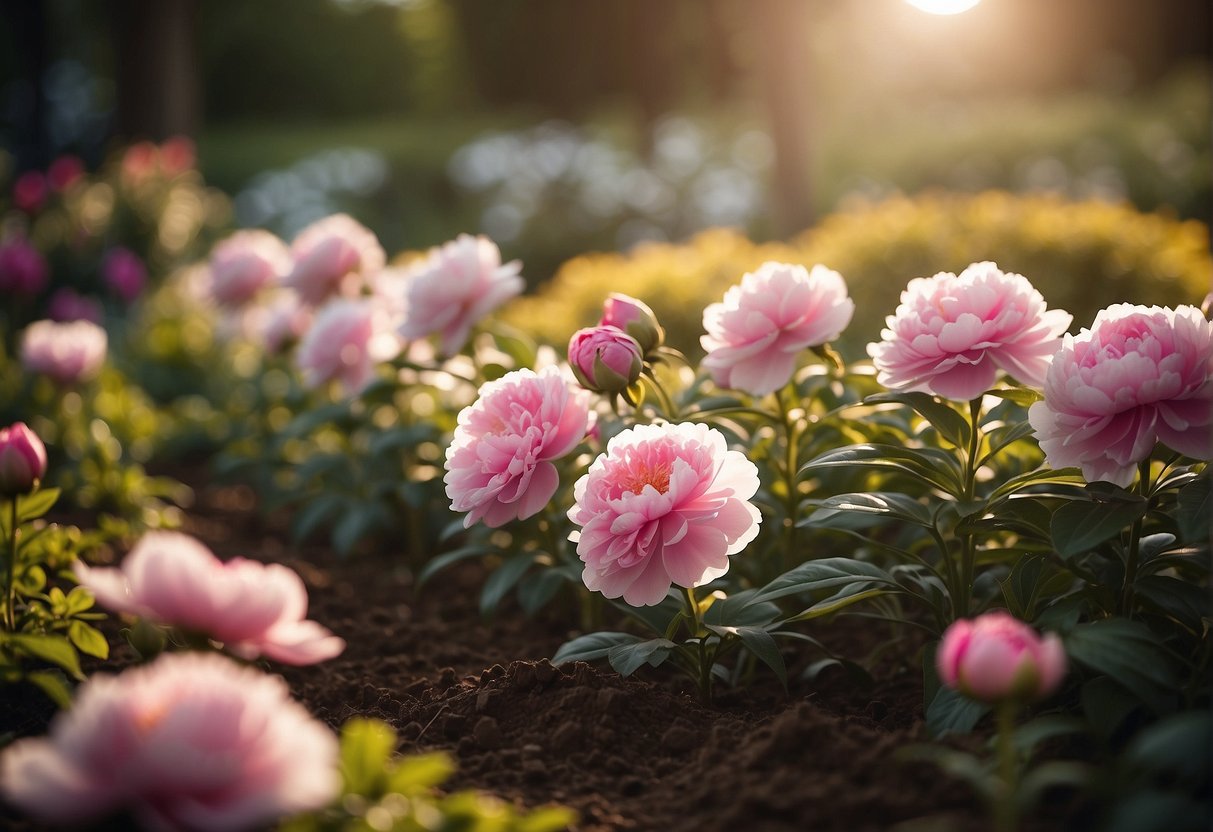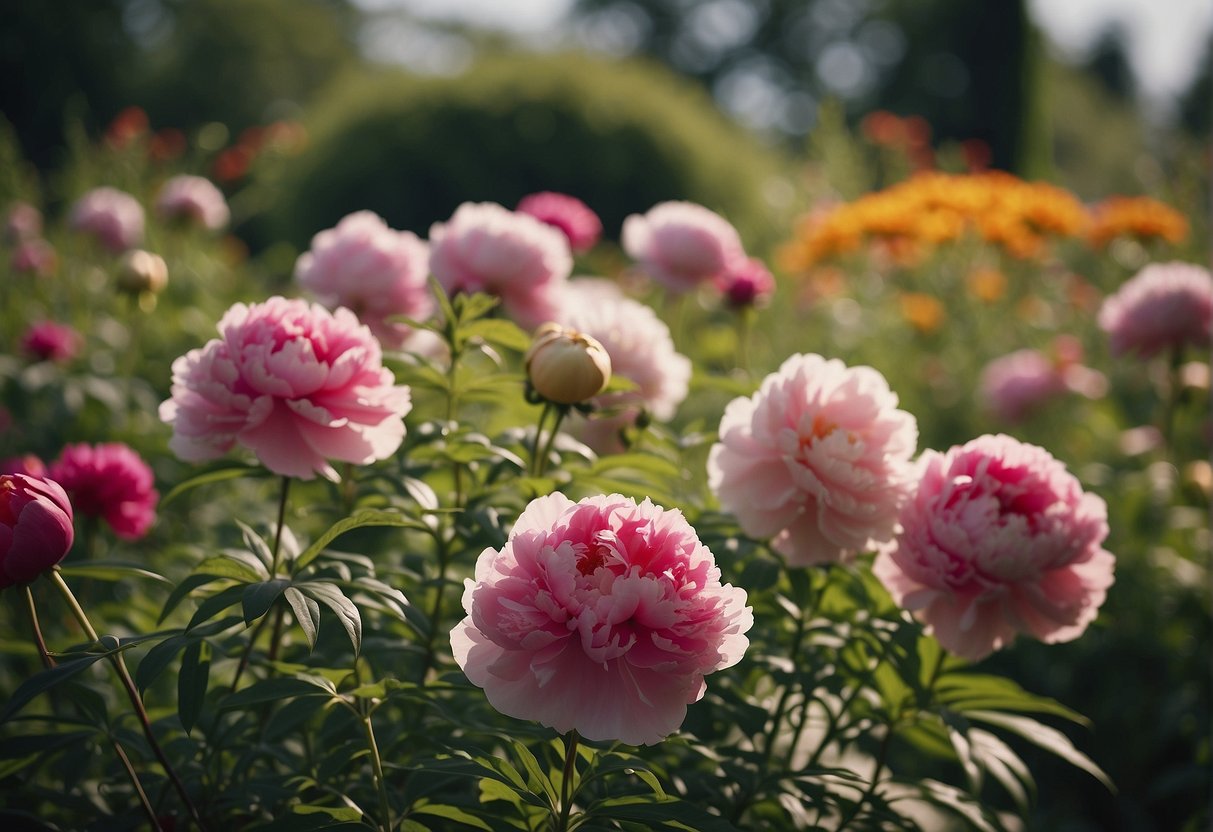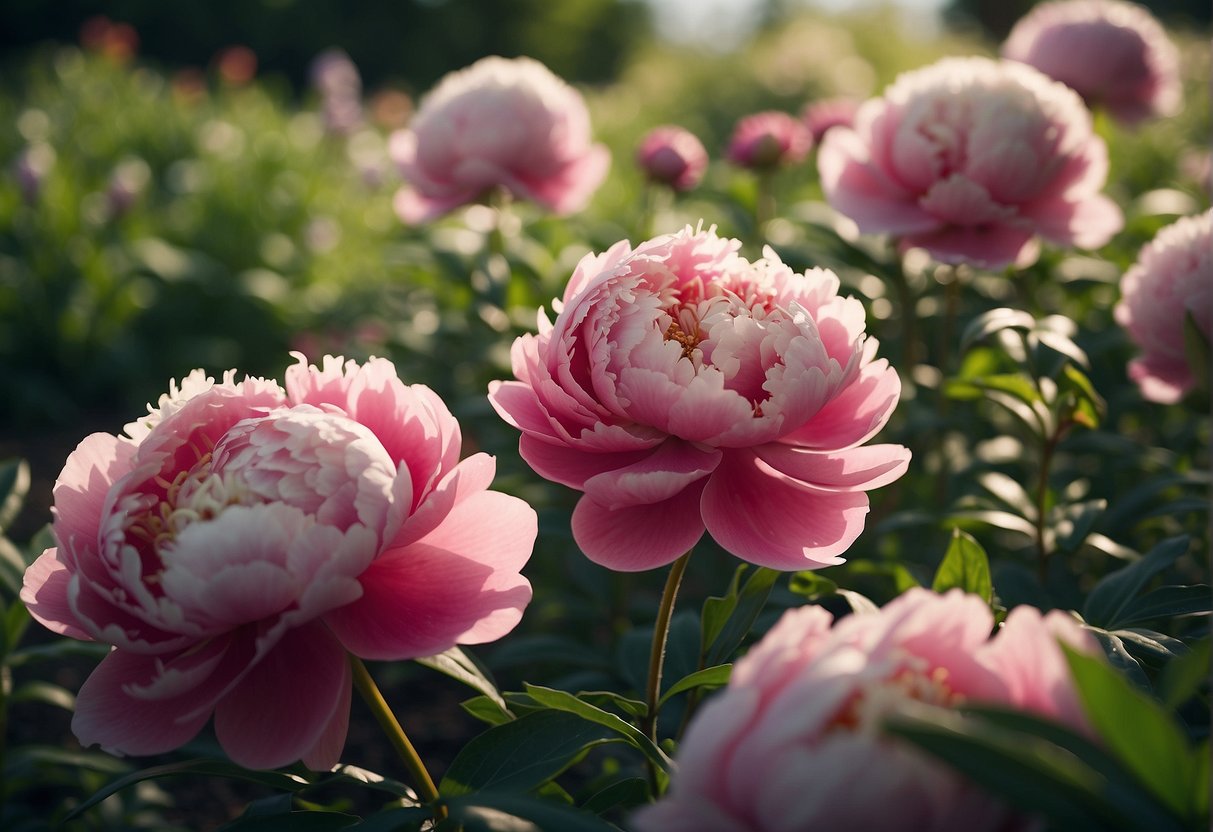Where to Plant Peonies: Tips and Guidelines for Optimal Growth
Peonies are a popular flowering plant known for their large, showy blooms and sweet fragrance. These perennials are relatively easy to grow, but choosing the right location for planting is crucial to their success. Whether you’re a seasoned gardener or new to planting, understanding where to plant peonies is essential to ensure they thrive.

When it comes to planting peonies, there are a few key factors to consider. First and foremost, peonies need plenty of sunlight to bloom. They should be planted in an area that receives at least six hours of direct sunlight per day. Additionally, peonies prefer well-draining soil that is rich in organic matter. Soil that is too compact or heavy can cause the roots to rot, leading to stunted growth or even death of the plant.
Choosing the Right Location for Peonies

Peonies are a popular flowering plant that can add a touch of elegance and beauty to any garden. However, planting peonies in the wrong location can lead to poor growth and even death of the plant. Here are some things to consider when choosing the right location for your peonies.
Understanding Sunlight Needs
Peonies require full sun to thrive. When selecting a location for planting, make sure that the area receives at least six hours of direct sunlight per day. If the area is shaded for most of the day, it may not be suitable for planting peonies.
Soil Requirements
Peonies prefer well-drained soil that is rich in organic matter. Before planting, it is recommended to amend the soil with compost to improve its texture and fertility. Peonies should be planted at the same depth as they were in their previous location, with the eyes (buds) facing upwards and the roots spread out. The soil surface should be level with the surrounding soil.
The soil type and pH level are also important considerations when planting peonies. Peonies prefer slightly acidic soil with a pH between 6.0 and 7.0. If the soil is too alkaline, peonies may not absorb nutrients properly, leading to stunted growth and poor flowering.
Space and Temperature Considerations
Peonies require adequate space to grow and thrive. When planting, make sure to space them at least three feet apart to allow for proper air circulation. This will help prevent diseases and pests from attacking the plants.
Peonies are hardy plants that can withstand cold winters. However, they require a period of cold dormancy to bloom properly. When selecting a location for planting, make sure that the area is within the appropriate hardiness zone for your variety of peony.
By considering these factors when selecting a location for planting peonies, you can ensure that your plants will thrive and produce beautiful blooms for years to come.
Planting and Growing Peonies
Planting Techniques
Peonies are hardy perennials that can be planted in either spring or autumn. It is best to plant them in well-draining soil that is rich in organic matter. Before planting, make sure to dig a hole that is at least 2 feet deep and 2 feet wide. The hole should be filled with a mixture of compost and bone meal.
When planting peonies, make sure to place them in a spot that receives at least 6 hours of sunlight each day. It is also important to space them at least 3 feet apart to allow for proper air circulation and growth. When planting, make sure to plant the peony with the eyes facing upward, and cover the roots with soil.
Watering and Mulching
Peonies require regular watering, especially during the summer months. It is important to keep the soil moist, but not waterlogged. To help retain moisture, it is recommended to mulch around the base of the plant with a layer of organic material, such as compost or wood chips.
Fertilization and Soil Nutrition
Peonies require regular fertilization to promote healthy growth and blooming. It is recommended to fertilize peonies in the early spring with a balanced fertilizer that contains nitrogen, phosphate, and potassium. Additionally, bone meal can be added to the soil to provide additional nutrients.
It is important to maintain a slightly acidic soil pH for peonies. If the soil pH is too high, iron deficiency may occur, which can lead to yellowing of the leaves. To correct this, iron chelate can be added to the soil.
Overall, peonies are a beautiful and rewarding plant to grow. With proper planting, care, and maintenance, they can provide stunning blooms year after year.
Peony Varieties and Their Care
Herbaceous and Tree Peonies
Peonies are a popular perennial plant known for their large, showy blooms. There are two main types of peonies: herbaceous and tree. Herbaceous peonies die back to the ground each winter, while tree peonies keep their woody stems year-round.
When planting herbaceous peonies, it’s important to choose a location with well-draining soil and full sun. These peonies bloom in late spring to early summer and come in a variety of flower types, including single, Japanese, double, and anemone. Some popular herbaceous peony varieties include ‘Festiva Maxima’, with its white blooms and crimson flecks, and ‘Sarah Bernhardt’, with its fragrant, pink double blooms.
Tree peonies, on the other hand, prefer partial shade and well-draining soil. They bloom in mid-spring and come in a variety of colors, including pink, red, and yellow. Tree peonies have large, single blooms that can reach up to 10 inches in diameter. Some popular tree peony varieties include ‘Chojuraku’, with its deep red blooms, and ‘Shimadaijin’, with its yellow and pink flowers.
Understanding Peony Blooms
Peonies are known for their large, showy blooms, but understanding their blooming habits can help you care for them properly. Peonies typically bloom for only a few weeks each year, so it’s important to choose varieties with staggered bloom times to extend the flowering season.
Peony blooms come in a variety of colors, including white, pink, red, and yellow. The flower type can also vary, with single blooms having a central cluster of stamens and double blooms having multiple layers of petals. Anemone-type peonies have a central cluster of stamens surrounded by a ring of flattened petals.
To care for peonies, it’s important to deadhead spent blooms to encourage new growth and prevent disease. Peonies also benefit from a layer of mulch to protect their roots and retain moisture. With proper care, peonies can be a beautiful addition to any garden.
Maintaining Healthy Peonies

Peonies are beautiful and hardy perennials that require minimal care to thrive. However, to keep them healthy and blooming year after year, it’s important to follow a few basic maintenance practices.
Dealing with Pests and Diseases
Peonies are generally resistant to pests and diseases, but they can still fall victim to a few common problems. Powdery mildew and botrytis blight are two fungal diseases that can affect peonies. Powdery mildew appears as a white, powdery coating on the foliage, while botrytis blight causes dark spots on the leaves and flowers.
To prevent these diseases, make sure your peonies are planted in a location with good air circulation and plenty of sunlight. Avoid overhead watering, which can promote fungal growth. If you do notice signs of powdery mildew or botrytis blight, remove any infected foliage and treat the plants with a fungicide.
Peonies can also attract pests like aphids and spider mites. To get rid of these pests, spray the plants with a strong jet of water or use an insecticidal soap.
Pruning and Deadheading
Pruning and deadheading are important for keeping peonies healthy and promoting blooming. Pruning should be done in late fall or early spring, before new growth begins. Cut back any dead or damaged stems, and remove any foliage that has fallen to the ground to prevent the spread of disease.
Deadheading, or removing spent blooms, should be done in late spring or early summer, after the flowers have faded. This will encourage the plant to produce more blooms and prevent the formation of seed pods, which can drain the plant’s energy.
In conclusion, maintaining healthy peonies is easy with a little bit of care and attention. By following these basic practices, you can enjoy beautiful, blooming peonies year after year.
Frequently Asked Questions

What is the optimal spacing for planting peonies?
Peonies should be planted 3 to 4 feet apart to allow enough space for the roots to grow and to prevent overcrowding. It is important to give each plant enough space to receive adequate sunlight and nutrients.
How deep should peony bulbs be planted?
Peony bulbs should be planted 2 inches deep, with the eyes (buds) facing up. Planting too deep can result in poor growth and blooming, while planting too shallow can cause the bulbs to dry out.
Are there specific locations where peonies should not be planted?
Peonies should not be planted in areas with poor drainage or where water tends to pool. They also prefer well-drained soil that is rich in organic matter. Additionally, peonies require full sun to bloom, so they should not be planted in shady areas.
What is the best time of year for peonies to bloom?
Peonies typically bloom in late spring to early summer, depending on the variety. The exact timing can vary depending on climate and growing conditions. It is important to note that peonies require a period of cold dormancy in order to bloom properly.
Can peonies be successfully grown in containers?
Yes, peonies can be grown in containers, but it is important to choose a large enough container to allow for proper root growth. The container should also have drainage holes to prevent water from accumulating and causing root rot.
Do peonies require special care when placed in a vase?
Peonies can be sensitive to changes in temperature and water quality, so it is important to take care when placing them in a vase. It is recommended to cut the stems at an angle and change the water daily to prevent bacterial growth. Additionally, peonies should be kept away from direct sunlight and drafts to prevent wilting.

